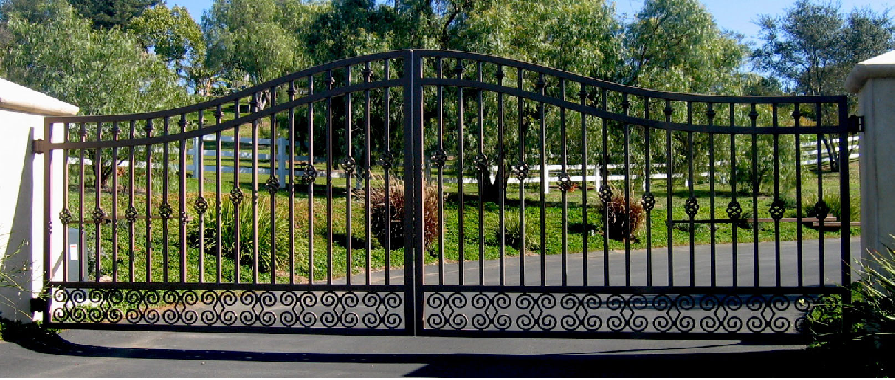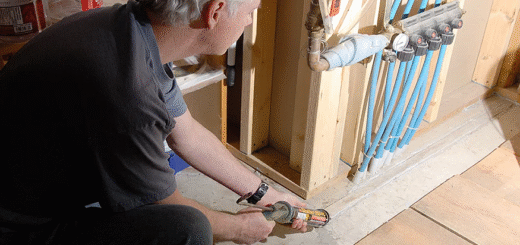Filling Large Gaps Around Door Frames is Easy. Learn How
Most doors won’t close properly by default, and that could be a problem. They let the cool air out during the hot days of summer and the cold air in during the winter season. Those frustrating air drafts can wreak havoc on your HVAC equipment.

To compensate, your HVAC equipment will work overtime to regulate the temperature to your desired levels, which will obviously reflect in your energy bills.
However, if you’re marginally handy with home improvement, you could fix this problem like a professional without breaking the bank. All you need is the right set of tools, which we’ll discuss below.
Signs that your door frame needs caulking:
- The light shines through the door gap and door frame
- Chilly air blows through the doorway
- The gaps are uneven
- Water leaks around the door or under the door
- Difficulty in opening or closing the door
- The door gets jammed when you try to open or close it
- Creepy crawlies lurking around the foyer
- If these are Best Security Doors or not for safety
In typical cases, you’d need a tube of silicone caulk, a caulk gun, a utility knife, and some isopropyl alcohol to clean up after the job. However, traditional caulking is messy and may leave uneven results. One convenient alternative is to use caulk tape. In this guide, we’ll describe exactly how you can use peel and stick caulk to save you time, money, and all the hard work.
Pro Tip: For extra wide or extra narrow gaps, you can choose varying thicknesses of caulking tape.
How to Fill a Large Gap Around Door Frame
Before beginning the project, flatten the caulk strips by laying them flat. You can do this by placing a heavy object on them. This will help them adhere properly.
Step 1: Remove the existing caulk and clean up after the area with the help of some scouring powder to remove all residues and rinse thoroughly. This will help prep the surface for what is to come.
Step 2: Use a measuring tape (or any other instrument) to find the corner-to-corner or side-to-side dimensions of your door frame. Doing this early will minimize wastage of caulking strips (and save you money).
Pro Tip: As a general rule, one piece of caulking strip should never continue around the corner.
Step 3: Once you have the dimensions figured out, cut the caulk at the designated measurements. If you need to accommodate the tape around a corner, cut the end of the strip into a flat-mitered shape. In some cases, you may have to cut four pieces at the end of the strip to accommodate the shape of the door frame.
Step 4: Bend the caulk strip by folding it at the scoreline to form a 90-degree angle.
Step 5: Starting at the corner, peel a small section of the backing from the top half of the caulking strip. Press the top half firmly to the door frame. Take your time with this and be very careful to avoid having to reposition the caulking strip later. Work small sections of the caulking strip to avoid having to reposition. Repositioning the caulking strip could reduce its effectiveness.
Step 6: Gradually peel off the backing and press the strip against the door frame until you’ve reached the end of the strip.
Step 7: Repeat the above steps for the bottom half of the caulking strip.
Step 8: Continue the outlined steps for the other sections of the door frame. You’ll notice that the caulking strip creates a perfectly even line all the way across without making a mess.
Step 9: Once you have applied the caulking strips to all sections of the door frame, give at least 12 hours for the caulk to properly adhere to the door frame and drywall.
Not all cases of drywalls and doorframes are perfect. Sometimes the gaps are a little too wide to work with. But there’s a neat little trick that lets you professionally deal with those big gaps.
Use some toilet paper! Here’s how.
Remove individual pieces of toilet paper, fold them around, and simply wedge them between the crevices of the doorframe and drywall. Use a flathead screwdriver or a putty knife to fill in the gaps as you go along. The goal is not to completely fill the gaps, instead, you’re looking to fill the top edge of the gap. This will ensure that the caulking from the strips doesn’t run down the gaps.
Main Benefits of Using Adhesive Caulking Strips
Adhesive caulking strips have several advantages, here are four of the main benefits.
i) Airtight Seal
Adhesive caulking tape creates a stronger seal around certain fixtures and joints to prevent air and water from flowing into cracks and crevices. If allowed to circulate, these air drafts can significantly reduce the cooling and heating capacity of your HVAC systems and increase your energy bills.
ii) Protection from Outside Elements
Along with preventing air leaks, caulking strips can prevent outside elements from seeping inside around door frames and other gaps. This includes dust, dirt, water, and even insects. Water especially can lead to the growth of mold, and create stains on the carpets and walls.
iii) Caulking Strip Minimizes Waste
Provided you’ve done all your measurements before removing the backing off the black caulk tape, there is less chance of you wasting caulking strips. You end up doing a more thorough and clean job around the surfaces, which also increases the lifespan of those surfaces.
iv) No Need to Paint Afterwards
Because traditional caulking leaves a mess around and near the crevices of your door frame, they usually have to be painted after. This is a labor-intensive task that can be very costly, whether you’re doing it yourself or hiring outside help. With peel and stick caulk, a very precise amount of caulking is applied to the gaps around the door frame, leading to a more clean, professional job.
Read more: How To Set Up A Home Office
Author Bio Greg Amundson is the founder and creator of “InstaTrim” have been working in the home construction industry for 30+ years and have always had a passion to make DIYers’ life easier by developing products like white peel and stick caulk, black caulk tape, grey PVC corner trim, which helps in filling gap between baseboard and floor etc.













